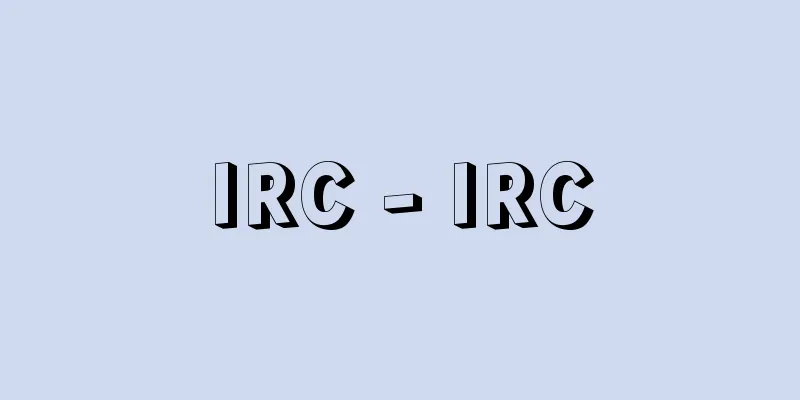New Industrial City

|
This refers to cities designated as targets for regional and industrial development under the New Industrial City Construction Promotion Law (Law No. 117 of 1962). Initially, 13 areas were designated, but two areas, Akita Bay and Nakaumi, were added later, and since the 1980s, there have been 15 areas. These are Central Hokkaido (Hokkaido), Hachinohe (Aomori Prefecture), Akita Bay, Sendai Bay (Miyagi Prefecture), Joban and Koriyama (Fukushima Prefecture), Niigata, Matsumoto and Suwa (Nagano Prefecture), Toyama and Takaoka (Toyama Prefecture), Southern Okayama Prefecture, Nakaumi (Tottori and Shimane Prefectures), Tokushima, Toyo (Ehime Prefecture), Oita, Hyuga and Nobeoka (Miyazaki Prefecture), Shiranui, Ariake, and Omuta (Fukuoka and Kumamoto Prefectures). Initially, the following requirements were pointed out for designation as a new industrial city: (1) Industrial land of 1,000 hectares or more and housing estates of 300 hectares or more, and the required amount of industrial water. (2) It is possible to achieve a population of 200,000 and industrial shipment value of 300 billion yen in the planned target year. (3) There is the possibility of advancing plans to attract industrial assets and plans to develop major transportation facilities. The New Industrial City Plan was an attempt to promote the "decentralization of industry" outlined in the Comprehensive National Development Plan (ZENSO) of the same year. To that extent, it aimed to order various industrial developments by systematically dispersing and reorganizing factories that were overly concentrated and accumulated in existing industrial areas on a national scale. It is true that if the above-mentioned requirements had been rigorously assessed and developments had been carried out comprehensively and systematically in the designated cities, the order of development might have been maintained. However, in reality, the intentions of various ministries and local governments became intertwined, and the compromise that was ultimately presented as 15 designated cities was the result. And it ended up being caught up in and used by the powerful trend of base industrial development centered on the Pacific Belt Zone. The following should be noted regarding the problems surrounding the new industrial cities. Among the new industrial cities, industrial development was particularly vigorous and factories were established in the areas located along the Pacific belt, while development was slow in areas along the Sea of Japan coast or in areas far from the belt. As a result, the growth in industrial production and population in the new industrial cities as a whole was lower than the national average. Meanwhile, when we look at new industrial cities where development was particularly rapid, such as southern Okayama Prefecture, which contains the Mizushima district, the growth in industrial production was certainly remarkable, but balanced social development was never achieved. On the one hand, new pollution was created, and on the other hand, local tax revenues were not fully returned to the local community and its residents, and the development of the living environment fell significantly behind. Furthermore, the newly established new industries and large corporations did not necessarily lead to harmonious development of local industries and economies. Thus, it can be said that the new industrial cities were "nibbled" at by the development of core industries in the Pacific Belt Zone. The high economic growth of the 1960s used some of the new industrial cities as one of the main stages, while forcing the new industrial cities as a whole to "clean up" the mess, and subsequently raised the Japanese economy to a new stage. However, entering the 1990s, the following situation became clear. Large-scale industrial development had failed, as seen in the Tomakomai Eastern Development Project in Hokkaido (one of the projects of the National Development Plan). On the other hand, the development of IT (information technology) related industries made it possible to locate factories in a way that was different from the heavy and large-scale industries, making it possible to develop industries that were not limited to the framework of new industrial cities. Thus, the basic directions for new industrial cities, such as correcting regional disparities, preventing the overgrowth of large cities, and decentralizing cities to rural areas, became little more than a name. [Kunio Motoshima] "Structural Analysis of Heavy Chemical Industrial Cities" edited by Minoru Shimazaki and Shigeru Yasuhara (1987, University of Tokyo Press) " "The Creation of Industrial and Cultural Cities: Endogenous Development of Local Industrial Cities" by Shigeru Suzuki (1998, Daimeido) [Reference items] | | |©Shogakukan "> Location map of the new industrial city (1985) Source: Shogakukan Encyclopedia Nipponica About Encyclopedia Nipponica Information | Legend |
|
新産業都市建設促進法(昭和37年法律117号)によって、地域開発、工業開発の対象として指定された都市をいう。当初その指定は13区域であったが、その後、秋田湾、中海(なかうみ)の2区域が追加され、1980年代以降は15区域となっている。道央(北海道)、八戸(はちのへ)(青森県)、秋田湾、仙台湾(宮城県)、常磐(じょうばん)・郡山(こおりやま)(福島県)、新潟、松本・諏訪(すわ)(長野県)、富山・高岡(富山県)、岡山県南、中海(鳥取・島根県)、徳島、東予(愛媛県)、大分、日向(ひゅうが)・延岡(のべおか)(宮崎県)、不知火(しらぬひ)・有明(ありあけ)・大牟田(おおむた)(福岡・熊本県)がそれである。 最初、この新産業都市指定の要件としては次のことが指摘されていた。 (1)1000ヘクタール以上の工業用地と300ヘクタール以上の住宅団地、および必要量の工業用水。 (2)計画目標年次に人口20万、工業出荷額3000億円の線が達成可能であること。 (3)工業誘致計画進行の可能性と幹線交通施設の整備計画があること。 新産業都市計画は、同じ年の全国総合開発計画(全総)に示されている「工業の地方分散」を推し進めようとしたものである。その限りでは、既成の工業地帯に過度に集中・集積した工場を、計画的に全国規模で分散し、再編することによって、工業を軸とした諸開発を整序するものであった。確かに、前述した要件が厳しく査定され、指定された都市で諸開発が全面的、計画的になされていたならば、開発秩序は保たれたかもしれない。しかし現実には、諸省庁、自治体などの思惑が入り乱れ、妥協の結果が、最終的には15の指定都市として示されたのである。そして、太平洋ベルト地帯を軸とする拠点工業開発の強力な流れに巻き込まれ、それに利用されることになる。 新産業都市をめぐる問題としては次のことが留意されてよいだろう。新産業都市のなかでも、とりわけ活発に工業開発が進められ、工場立地が盛んになされたのは、太平洋ベルト地帯に位置している地域であって、日本海沿岸地域、あるいはベルト地帯から遠く離れた地域では、開発はあまり進められなかった。したがって、工業生産の伸びも、人口の伸びも、新産業都市全体でみると、全国平均よりもむしろ低い水準を示すことになる。ところで、開発がとくに急速であった新産業都市、たとえば水島地区を抱えている岡山県南をみると、そこでは確かに工業生産の伸びは著しかったが、均衡のとれた社会開発は、ついに実現されなかった。一方では新しく公害が生み出され、他方では地元税収入が地域社会とそこの住民に十分還元されることなく、生活環境の整備が大幅に立ち後れることとなった。 さらに新しく立地した新産業、大企業は、かならずしも地元の産業と経済とを調和ある発展に導きはしなかった。こうして新産業都市は、太平洋ベルト地帯における拠点工業開発に「つまみ食い」されたといってよいだろう。1960年代の高度成長は、新産業都市全体に、その「後始末」を押し付けながら、一部の新産業都市をその主要舞台の一つとして利用し、その後の日本経済を新しい段階に引き上げたのである。 しかし、1990年代に入ってみると、次のような事態が明らかとなった。北海道苫小牧(とまこまい)東部開発(全総の一つ)にみられたように、大規模工業開発は失敗した。一方、IT(情報技術)関連産業の展開は、重厚長大産業とは違った工場立地を可能としたので、新産業都市の枠にとらわれない産業開発が可能となった。こうして、地域格差の是正、大都市の過大化防止、都市の地方分散といった新産業都市の基本方向は、有名無実に近いものとなった。 [元島邦夫] 『島崎稔・安原茂編『重化学工業都市の構造分析』(1987・東京大学出版会)』▽『鈴木茂著『産業文化都市の創造――地方工業都市の内発型発展』(1998・大明堂)』 [参照項目] | | |©Shogakukan"> 新産業都市位置図(1985年) 出典 小学館 日本大百科全書(ニッポニカ)日本大百科全書(ニッポニカ)について 情報 | 凡例 |
<<: New Industry Classification - Shinsanbetsu
>>: New triangular shell - New triangular shell
Recommend
Sakakita [village] - Sakakita
A village in Higashichikuma District, central Naga...
Calceolaria - Calceolaria
An annual or perennial plant of the Scrophulariac...
Gades, Antonio
Born: November 14, 1936 in Alicante [Died] July 20...
GNOME - GNOME
A desktop environment developed by the GNU Project...
Christian Music
...The liturgical book "Sacaramenta Compendi...
Honeysuckle - Honeysuckle
Touhon (a climbing plant) of the Rubiaceae family...
Hydrogen electrode
A type of reference electrode, it is made by imme...
All Japan Dowa Association
A movement group aiming to completely resolve the ...
Melbourne - Melborun (English spelling) Melbourne
It is the capital of the state of Victoria in sou...
Sugarplum (English spelling)
...hard candy (candy with little moisture) with a...
Comayagua (English spelling)
A city in central Honduras. Capital of the departm...
Karasawadake - Karasawadake
...A mountain range with an H-shaped plan view, t...
Euphorbia (English spelling) (Latin) Euphorbia
An annual or perennial plant of the Euphorbiaceae ...
Nautical Almanac
...Used for various astronomical observations, as...
kn
…Historically, it was calculated based on the sur...









